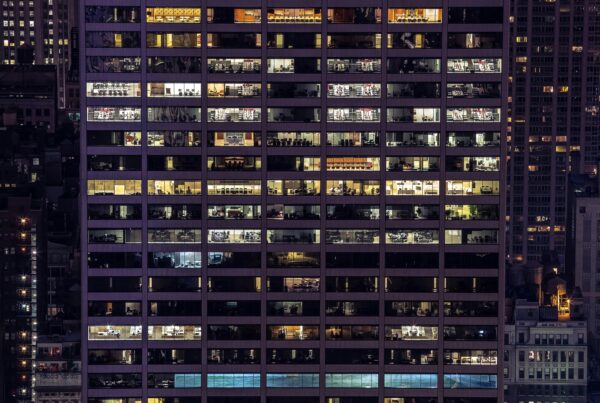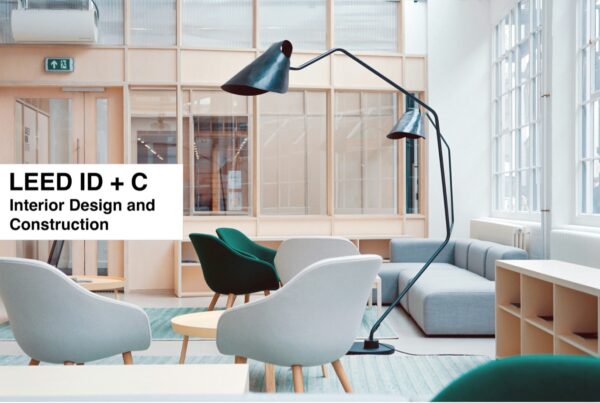The exact number of McDonald’s French fries recently made the news, because apparently it’s more or less 19. Whatever the true figure, it’s still a lot to use for what is essentially just fried potatoes. Then it occurred to us that the fries’ red carton holder have never listed the ingredients at all. It’s beyond us how McDonald’s can get away with this.
In green building, that kind of omission would have been a no-no, of course. LEED v4 made sure of that, especially with the improved rigorous standards of Materials and Resources section. Since then, manufacturers have been under pressure to make the necessary product disclosures. In particular LEED v4’s new requirements— LCAs (Life Cycle Assessments), EPDs (Environmental Product Declarations) and HPDs (Health Product Declarations) became powerful tools for disclosure.
As a recap, LCAs measure the impacts of the entire building and the various materials that comprise it throughout their entire life-cycle, especially with regards to climate change. EPDs, on the other hand, are an extension of LCAs, reporting the environmental impacts of a product and written according to a standardized format called PCR (Product Category Rules). Meanwhile HPDs reveals the ingredients and contents of a product and their impacts on human health.
These transparency tools strive to turn green building projects inside out. By delving on both levels of building and product as well as their life cycles, LEED v4’s perspective is more holistic and long-term. LEED 2009 seems minor league compared to it.
Resistance from Building Materials Manufacturers
The new demands haven’t been easy on manufacturers though.
Disclosure wasn’t commonplace among manufacturers in the US, owing to lax regulations unlike the European Union’s very stringent and all-encompassing REACH program, which has even enacted deadlines for manufacturers. Before LEED v4, manufacturers only highlighted certain green attributes of their products, such as recycled content. If it weren’t for LEED v4’s new rules, perhaps only a few would have ever taken the initiative to create HPDs.
To a certain extent, manufacturers’ hesitance is understandable. Getting tested and verified by third-party assessors is a costly and complicated process—which goes for each and every product they have. Preparing lengthy documentations can also be bewildering. Product disclosure also puts companies at risk for giving away proprietary info and trade secrets. Some companies are simply hesitant because HPDs and EPDs force them to divulge hazardous ingredients that would automatically disqualify them from LEED.

The Pharos Project lens shows environmental attributes against which building products will be measured.
When LEED v4 first rolled out, the lack of LCAs, EPDs, and HPDs naturally created problems for LEED users who had to wade through various product choices to find eligible ones they can specify for their green projects. Thankfully, there are databases to help them. The Pharos Project, for example, has evaluated and profiled, according to its website, over “1,600 building products and components from 296 manufacturers, across 13 major product categories” as well as “34,400 + chemicals and materials for 22 health and environmental hazards including carcinogenicity, mutagenicity, reproductive toxicity and endocrine disruption, against 60 authoritative lists of hazards issued by governments, NGOs and other expert bodies.”
Similarly, there’s GreenSpec and GreenScreen, both independent verification bodies for assessing chemical hazards of green building products. LEED users are thus adequately armed with online resources.
HPDs, being an open standard, can be a very subjective matter though. Manufacturers can control the level of detail of their product disclosure. To date, only 59 manufacturers have fully disclosed the ingredients of 380 products in the Pharos project. The Living Building Challenge’s strict Red List (of toxic chemicals of concern) and Declare label are stricter in this respect.
As industry-wide benchmarks for HPDs and EPDs become de facto standards, manufacturers will be hard-pressed to comply—hopefully with increasing levels of disclosure and transparency. Only then will have a truly comprehensive assessment of a building’s overall impacts.
Benefits for Manufacturers
Besides the obvious benefit of being eligible for the LEED v4 Materials and Resources section, there are other perks of product disclosure and transparency.
Innovation
A company’s R&D department will be spurred to reformulate, tweak, and update its products to improve carbon footprint and eradicate chemicals of concern. Ture, this can be a costly and lengthy process, but that’s always the case with innovation.
Cost-Cutting
Cutting back on toxic chemicals from the supply chain might also have significant cost-cutting benefits for companies.
-
Competency
Manufacturers who embrace a more transparent disclosure definitely have an edge over their competitors. As the saying goes, “Consumers vote with their dollars. Architects vote with their specifications.” When manufacturers don’t comply, there’s the possibility of being outed by rivals who have long ago aligned their products with LEED v4, thus hurting their business.
Health
Employees will certainly appreciate working in an environment made safer by conscious effort to avoid toxic chemicals.
Environment
When companies are encouraged to be transparent with their LCAs, EPDs, and HPDs, this hopefully creates a snow-ball effect, bringing environmental awareness to all the other policies of the company, such as adopting cradle-to-cradle policies for example.
Business Practices
The increased transparency also obliges manufacturers to take an honest look at what needs changing in their business practices.
Final Thoughts
LEED was never meant to be exclusionary or discriminatory. Compliance with the stringent requirements of LEED v4’s MR credits can be laborious, but the benefits outweigh the initial snags. For green building to truly be legitimately green, healthy, and meaningful, building product manufacturers must set aside their agenda.
Surely we now live in a world that’s more aware and informed than ever before. Where a bag of fries with unlisted ingredients can be a cause for concern just as the vinyl flooring under our feet. The materials and components that make up our built environment might not have the same immediate and direct effect as a bag of French fries has on our body, which is why it’s easy to find fault with the latter. But off-gassing and VOCs are serious health concerns, just as the process of extraction of raw materials and their manufacture can also have serious environmental tolls.
Thanks to valiant green rating systems such as LEED v4 and the Living Building Challenge, manufacturers are cleaning up their act. Hopefully, transparency becomes the status quo in sustainable building.












